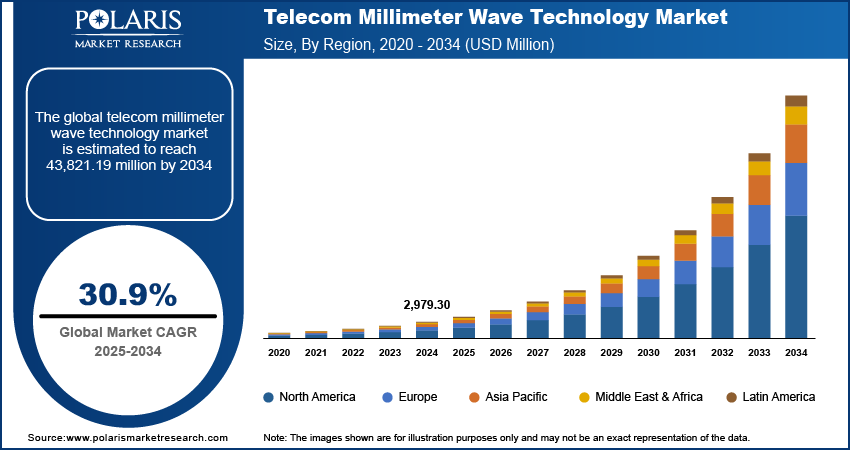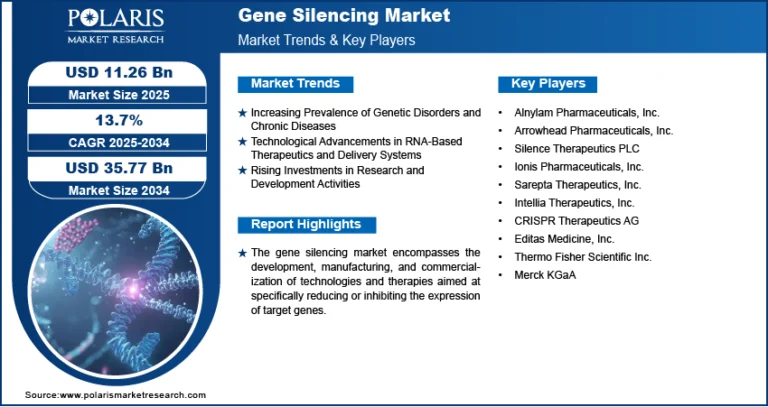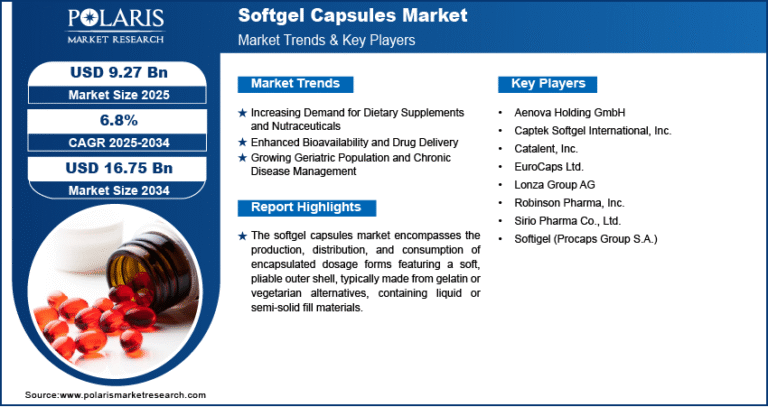Telecom Millimeter Wave Technology Market Expected to Reach USD 43,821.19 Million by 2034, Growing at a CAGR of 30.9%

The global telecom millimeter wave technology market was valued at USD 2,979.30 million in 2024 and is projected to reach USD 3,894.24 million by 2025. The market is expected to grow significantly, reaching USD 43,821.19 million by 2034, at a robust compound annual growth rate (CAGR) of 30.9% during the forecast period.
Telecom Millimeter Wave Technology Market: Trends & Insights
- 5G Deployment Fuels mmWave Adoption
One of the most significant drivers of the telecom mmWave technology market is the global rollout of 5G infrastructure. Millimeter wave spectrum—especially in the 24 GHz to 100 GHz range—offers the potential for ultra-fast data speeds and low latency communication, essential for real-time applications such as autonomous vehicles, smart cities, and immersive virtual reality (VR). Countries like the U.S., South Korea, China, and Japan are leading in mmWave-based 5G deployment, propelling market demand.
- Growing Use in Backhaul and Front-Haul Networks
Telecom operators are increasingly leveraging mmWave frequencies for backhaul and front-haul applications in dense urban areas. These high-frequency waves enable operators to transmit data wirelessly between small cells and the core network without laying extensive fiber infrastructure, reducing costs and accelerating deployment times.
- Technological Innovations and Integration with AI
Advancements in semiconductor technologies, including phased-array antennas and beamforming techniques, have significantly improved the performance and efficiency of mmWave communications. Additionally, integration with artificial intelligence (AI) and machine learning is enhancing network optimization, predictive maintenance, and dynamic spectrum management, enabling telecom providers to extract maximum value from mmWave investments.
- Spectrum Allocation and Regulatory Developments
Regulatory support and spectrum availability are crucial to mmWave market growth. Governments worldwide are increasingly allocating mmWave bands for commercial 5G use. For instance, the Federal Communications Commission (FCC) in the U.S. has opened up several mmWave bands for licensing, while the European Union and other APAC nations are streamlining auctions to make high-frequency bands available for telecom applications.
Market Size & Forecast
- Market Size in 2024 – USD 2,979.30 million
- Market Size in 2025 – USD 3,894.24 million
- Projected Market Size by 2034 – USD 43,821.19 million
- CAGR (2025–2034) – 30.9%
Request a free sample copy or view report summary: https://www.polarismarketresearch.com/industry-analysis/telecom-millimeter-wave-market/request-for-sample
Market Overview
Millimeter wave technology operates in the high-frequency spectrum range typically between 24 GHz and 86 GHz, enabling ultra-fast data transmission and enhanced bandwidth capabilities that are essential for advanced telecom applications. The technology is central to 5G network densification strategies, supporting enhanced mobile broadband (eMBB), ultra-reliable low-latency communications (URLLC), and massive machine-type communications (mMTC).
The adoption of mmWave technology extends beyond mobile networks, finding critical applications in fixed wireless access (FWA) and backhaul solutions, where it offers a cost-effective alternative to fiber-optic infrastructure, especially in urban, suburban, and rural settings. Furthermore, mmWave is integral to the expansion of Internet of Things (IoT) ecosystems and smart city infrastructures, providing the necessary high-speed connectivity and minimal latency required for real-time data exchange.






